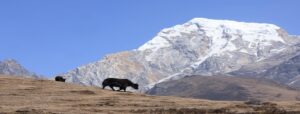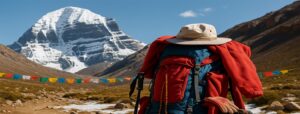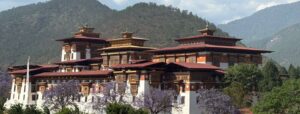Are you an adventure seeker and a nature enthusiast? If yes, then the Everest Base Camp trek is perfect for you! The Everest Base Camp trek is undoubtedly one of the most sought-after journeys in the world, attracting thousands of trekkers every year. Trekking to Everest Base Camp in December is not for the faint-hearted, but it’s an experience that will stay with you forever.
Weather Conditions in Everest Base Camp
The weather conditions in December can be harsh, but they also offer breathtaking views. The first thing to note is that December is one of the coldest months of the year in the Everest region. During the day, temperatures can drop as low as -5°C (23°F), and at night, they can drop to -15°C (5°F). However, don’t let that put you off! With the right gear, you can stay warm and comfortable throughout your trek.

One of the most exciting things about trekking in December is the chance of snowfall. While it can make the trail more challenging, it also transforms the landscape into a winter wonderland. The snow-capped peaks are even more stunning against a backdrop of crisp blue skies, and you’ll feel like you’re walking through a postcard.
Average Temperature at Everest Base Camp in December
If you’re planning on trekking to Everest Base Camp in December, you’re in for a treat! This time of year offers some of the clearest views of the surrounding mountains, and the average temperature provides a comfortable and enjoyable trekking experience.
More: How cold is Everest Base Camp in November? – Weather, Temperature, Travel Tips
The average temperature in December at Everest Base Camp ranges from -10°C (14°F) to -20°C (-4°F) at night and can reach a high of 5°C (41°F) during the day. While these temperatures may seem daunting, with the right gear and preparation, you’ll be able to comfortably explore this stunning region.
Crowd at Everest Base Camp in December
If you’re considering trekking to Everest Base Camp in December, you might be wondering what the crowds are like during this time of year. While the peak trekking season in Nepal is from October to November, December is still a popular time to visit and witness the beauty of the Himalayas. The crowds at Everest Base Camp in December are significantly less compared to the peak season, which means you can enjoy the stunning scenery in a more peaceful and relaxed environment.
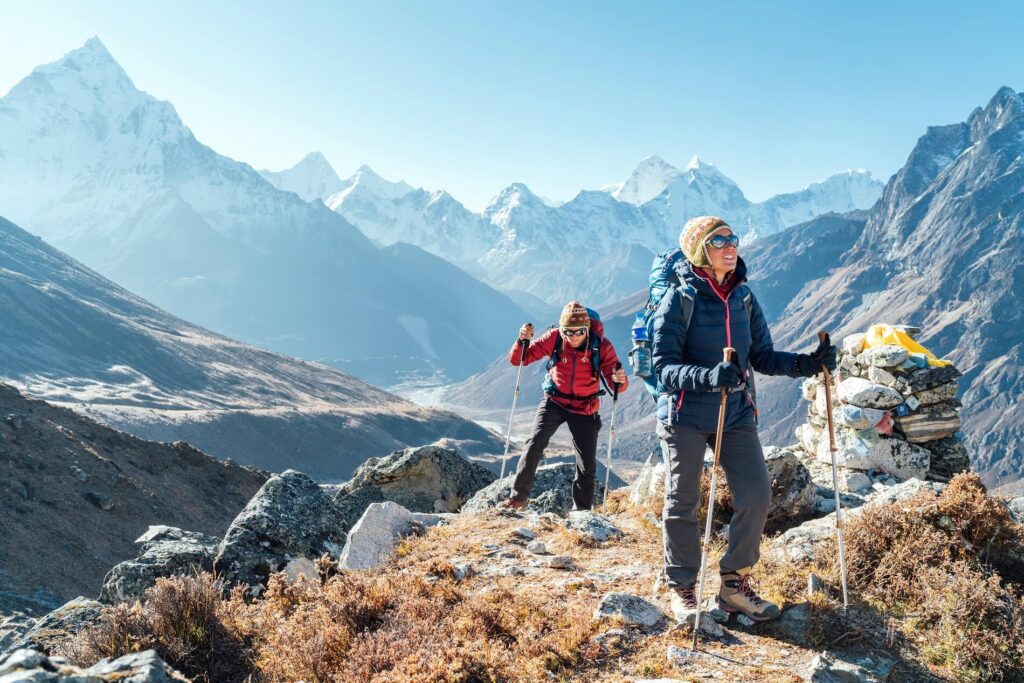
However, the smaller crowds can be a major advantage for those looking for a more peaceful and relaxed trekking experience. You won’t have to worry about overcrowded trails or difficulty finding accommodations, and you’ll have more opportunities to interact with locals and fellow trekkers.
Also Check: Food and Accommodation on Everest Base Camp Trek
Festival at Everest Base Camp in December
Welcome to the Everest Base Camp Winter Festival! The cold winds of December have arrived, but the warmth of the Sherpa culture and tradition still thrives in the heart of the Himalayas. The Everest Base Camp Winter Festival is a celebration of the Sherpa culture, winter sports, and the majestic beauty of the Himalayas.
The festival takes place in the month of December when trekkers and mountaineers brave the freezing temperatures to reach the base of the world’s highest peak. The Everest Base Camp Winter Festival is a unique celebration that combines the cultural heritage of the Sherpa people with the thrill of winter sports.
One of the highlights of the festival is the Sherpa culture exhibition, where locals showcase their traditional clothing, jewelry, and handicrafts. Visitors can also witness the fascinating tradition of Sherpa cuisine, with dishes like Thenduk (noodle soup), Khapsey (deep-fried dough), and Sukkha (dried meat) on offer.
Flora and Fauna that were found on Everest Base Camp in December
Flora
The Everest Base Camp Trek is undoubtedly one of the most popular treks in the world, attracting thousands of visitors every year. But did you know that this trek also offers a unique opportunity to witness some of the most amazing flora species found in the Himalayan region? December is a particularly interesting time to explore the flora of the Everest Base Camp trek, as the winter season brings its own special charm to the landscape.
Here are some of the most interesting flora species you can expect to encounter during the Everest Base Camp trek in December:
- Rhododendron: The national flower of Nepal, rhododendrons are a sight to behold during the trek. These vibrant flowers come in a range of colors, from bright reds and pinks to soft whites and yellows. You can spot them growing in abundance in the lower-altitude forests, particularly around Tengboche and Namche Bazaar.

- Juniper: Juniper is a type of evergreen tree that is commonly found in the Himalayas. The wood of the juniper tree is used for making incense, and its berries are used for medicinal purposes. You can spot juniper trees along the trekking trail, particularly in the higher altitude regions.
- Blue Poppy: The Blue Poppy is a rare and exotic flower that is found in the Himalayan region. It is the national flower of Bhutan and is also found in Nepal. The Blue Poppy is a stunning sight to behold, with its delicate blue petals and golden stamens. You can spot these flowers growing in rocky crevices and slopes.
- Himalayan Primrose: The Himalayan Primrose is another beautiful flower that is found in the Everest region. These flowers come in a range of colors, from deep pinks and purples to soft yellows and whites. You can spot them growing in rocky areas and near streams.
- Edelweiss: Edelweiss is a type of flower that is native to the Alps, but is also found in the Himalayas. It is a hardy plant that can survive in the harshest of conditions. The Edelweiss is a small, white flower with furry leaves. You can spot them growing in rocky areas and along the trekking trail.
Fauna
While many people associate Everest with snow leopards, the reality is that they are incredibly rare and difficult to spot. However, many other fascinating animals call this region home. Here are just a few of the animals you might be lucky enough to see on your trek:
- Musk Deer: These elusive creatures are known for their strong musky scent and distinctive fangs. While they can be found throughout the Himalayas, they are most commonly spotted in the forested areas around Everest.
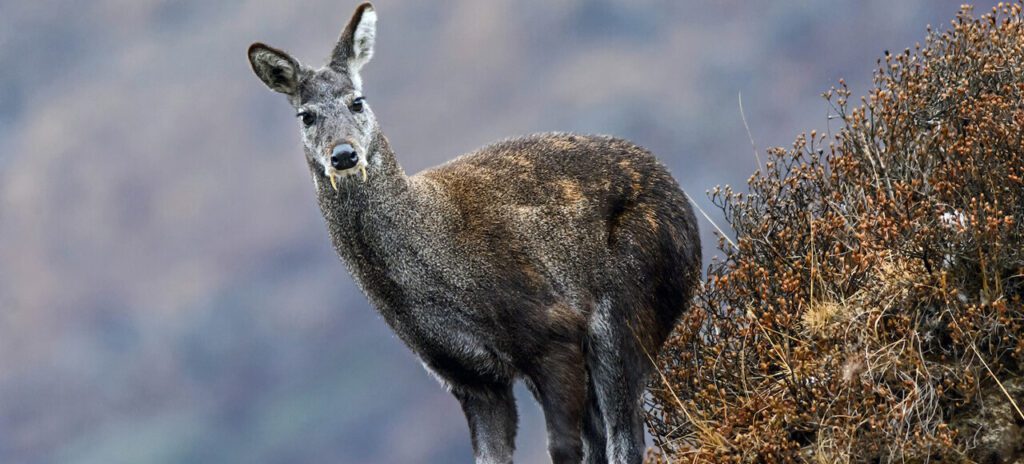
- Himalayan Tahr: Often mistaken for a wild goat, the Himalayan Tahr is a unique species with a shaggy coat and curved horns. These animals are excellent climbers and can often be seen perched on rocky outcroppings.
- Snow Cock: These majestic birds are found at high altitudes and have beautiful white feathers that allow them to blend in with the snow. They are known for their distinctive calls, which can be heard echoing throughout the mountains.
- Red Panda: It is possible to spot a Red Panda in the Everest region. These adorable creatures are known for their bushy tails and distinctive red fur. They are primarily found in the forested areas around the base of the mountain.
- Himalayan Monal: Known for their iridescent feathers, Himalayan Monals are one of the most beautiful birds in the world. They can be found throughout the Himalayas, but are most commonly spotted in the forested areas around Everest.
- Blue Sheep: Also known as the bharal, these animals are well adapted to the harsh mountain terrain. They have incredible agility and can often be seen jumping from rock to rock as they make their way up the steep slopes.
Also Read: Clothing for the Everest Base Camp Trek: A Comprehensive Guide
Side Trek
The Everest Base Camp trek is one of the most iconic treks in the world, and for good reason. The stunning scenery, challenging terrain, and the allure of the world’s highest mountain make it a bucket-list item for many adventurers. However, while the main trek to base camp is undoubtedly the highlight of the journey, many exciting side treks can be enjoyed along the way. In this blog, we’ll take a look at some of the most thrilling side treks that you can enjoy in Everest Base Camp in December.
- Chukhung Ri: Chukhung Ri is a small peak located in the Imja Valley, just off the main trek to base camp. The trek up to Chukhung Ri offers stunning views of the surrounding mountains and glaciers, including Ama Dablam, Makalu, and Lhotse. In December, the snow-covered landscape adds an extra layer of beauty to the scenery.
- Thame Valley: The Thame Valley is a remote valley located to the west of the Everest region. The trek to Thame is less crowded than the main trek to base camp and offers a glimpse into the traditional Sherpa way of life. In December, the valley is often covered in a blanket of snow, adding to the beauty and serenity of the trek.
- Gokyo Lakes: The Gokyo Lakes are a series of high-altitude lakes located in the Everest region. The trek to Gokyo is a bit more challenging than the main trek to base camp, but the stunning scenery is well worth it. In December, the lakes are often frozen over, creating a breathtaking winter wonderland. The trek up to Gokyo also offers some of the best views of the surrounding mountains, including Choyu, Lhotse, and Makalu.
- Kala Patthar: One of the most popular side treks in the Everest Base Camp region is the climb up to Kala Patthar. This small peak offers one of the best views of Mount Everest and the surrounding mountains. The trek up to Kala Patthar can be challenging, but the stunning panoramic views at the top are well worth the effort. In December, the clear, crisp weather makes for some of the best views of the year.
- Island Peak: Island Peak is a small peak located in the Everest region that can be climbed as a side trek from the main trek to the base camp. While the climb is challenging, it offers some of the best views of the surrounding mountains, including Lhotse and Makalu. In December, the clear, dry weather makes for ideal climbing conditions.
Tips for Everest Base Camp in December
If you’re planning to trek to Everest Base Camp in December, here are some helpful tips to keep in mind:
- Be prepared for cold weather: December is one of the coldest months of the year in the Everest region, with temperatures dropping to below freezing at night. Make sure you pack warm clothing, including a good quality down jacket, thermal layers, gloves, and a hat.
- Plan your travel plan carefully: During the off-season, some tea houses and lodges may be closed, so it’s important to plan your itinerary carefully and make sure you have a place to stay each night. It’s also a good idea to give yourself some extra time in case of bad weather or unexpected delays.
- Stay hydrated: It’s easy to become dehydrated at high altitudes, especially when it’s cold. Make sure you drink plenty of water throughout the day and consider carrying a water filtration system or purification tablets in case you need to refill your water bottle.
- Take it slow: Altitude sickness is a real danger when trekking in the Everest region, and it can be exacerbated by cold weather. Take your time and acclimatize properly, which means spending at least two nights at each altitude level before moving higher.
- Be prepared for possible flight delays: Flights to and from Lukla, the starting point of the trek, can be delayed or canceled due to bad weather. Be prepared for the possibility of spending an extra night in Lukla or Kathmandu, and make sure you have enough time in your itinerary to accommodate any delays.
- Consider hiring a guide or porter: If you’re not an experienced trekker or are unfamiliar with the area, it’s a good idea to hire a guide or porter to help you navigate the trail and carry your gear. They can also help you acclimatize properly and avoid altitude sickness.
- Bring cash: Many tea houses and lodges in the Everest region do not accept credit cards, so make sure you bring enough cash to pay for your accommodation and meals. It’s also a good idea to bring some extra cash in case of emergencies.
Merits and Demerits of Everest Base Camp in December
Merits
Everest Base Camp trek offers a unique and unforgettable experience to those who love the thrill of hiking and exploring. While many people choose to do this trek in the peak season from March to May, December is an excellent time to embark on this adventure as well. Here are some of the merits of the Everest Base Camp trek in December:
Fewer Crowds:
December is considered to be the low season for the Everest Base Camp trek. As a result, the number of trekkers on the trail is significantly lower than during the peak season.
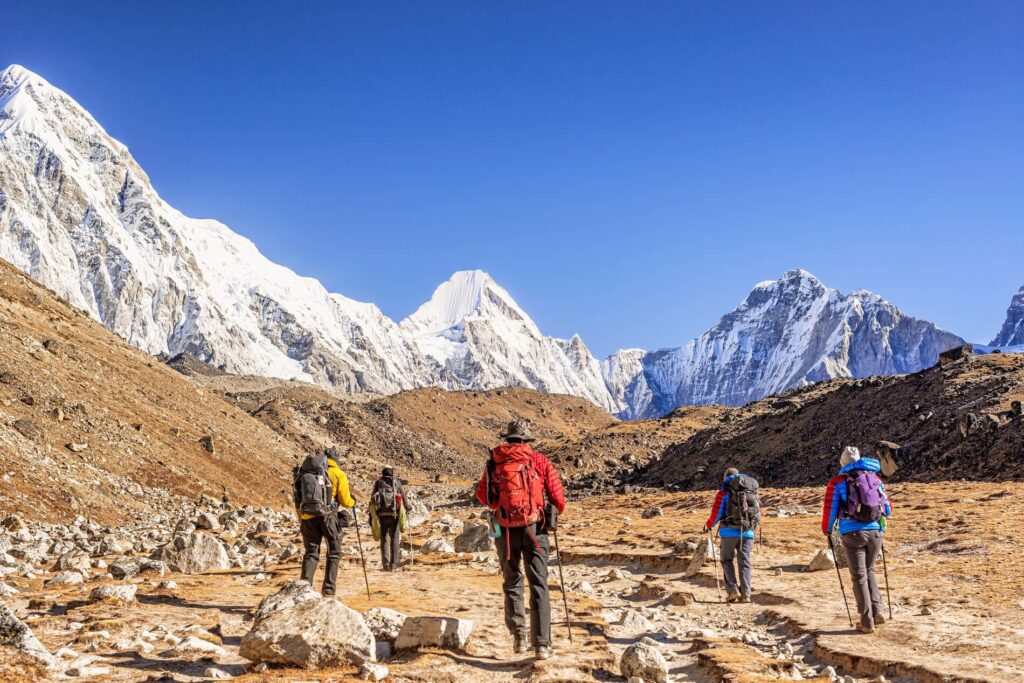
This means that you can enjoy the beauty of the Khumbu region without having to jostle for space or fight for accommodation.
Spectacular Views:
December is a great time to trek to the Everest Base Camp as the skies are usually clear and the views are breathtaking. You can see the majestic Mount Everest, along with other peaks like Ama Dablam, Lhotse, and Nuptse, in their full glory. The snow-capped peaks against the clear blue sky make for a truly magical experience.
Cooler Temperatures:
While the temperatures can drop quite low in December, it is still a great time to trek to the Everest Base Camp. The days are usually sunny and warm, while the nights can be chilly. This means that you can enjoy the trek without having to deal with the scorching heat of the summer months.
Festive Cheer:
December is a festive month in Nepal, and the Everest Base Camp trek offers an opportunity to experience the local culture and traditions. You can participate in the celebrations, enjoy the local food, and interact with the friendly locals.
Affordable:
December is considered to be the low season for the Everest Base Camp trek, and as a result, the prices are significantly lower than during the peak season. You can get good deals on accommodation, food, and trekking permits.
Demerits
Here are several demerits of the Everest Base Camp trek in December that you need to be aware of before embarking on this journey:
- Extreme weather conditions: December is one of the coldest months of the year in Nepal, and the temperature at the Everest Base Camp can drop to as low as -20°C. The trekking route is also prone to heavy snowfall, making the trails slippery and dangerous to navigate. Extreme weather conditions can cause several health problems, including hypothermia, frostbite, and altitude sickness.
- Short daylight hours During December, the days are shorter, and the nights are longer, which means you will have fewer daylight hours to trek. This can make it challenging to complete the trek within the usual timeframe and may require additional rest days. Moreover, the limited daylight can also impact the overall experience, as you may not get to enjoy the stunning views and landscapes to their fullest.
- Limited accommodation options: During the peak season, there are plenty of accommodation options available along the trekking route. However, in December, many teahouses may close due to extreme weather conditions, leaving you with limited options for food and shelter. This can also lead to overcrowding in the available teahouses, making it difficult to get a room.
- High risk of flight cancellations: Most trekkers fly from Kathmandu to Lukla to start the trek. However, during December, the weather conditions can cause frequent flight cancellations, leading to delays in the trek or even cancellations. This can also result in additional expenses, such as extra accommodation and transportation costs.
- Increased risk of avalanches: The risk of avalanches increases during the winter season, making it unsafe to trek in certain areas. This can also result in route changes or cancellations, leading to disappointment and frustration.
Need Help Planning Your Everest Trip?
Let our expert team at Asian Heritage Treks and Travel take care of everything — from guided tours to personalized packing tips and travel arrangements.
Plan My Everest Trip




